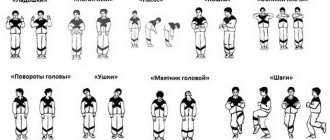Hypertension (essential arterial hypertension, primary arterial hypertension) is a chronic disease characterized by a long-term persistent increase in blood pressure. The diagnosis of hypertension is usually made by excluding all forms of secondary hypertension.
Source: neotlozhnaya-pomosch.info
According to the recommendations of the World Health Organization (WHO), blood pressure is considered normal if it does not exceed 140/90 mmHg. Art. Exceeding this indicator over 140–160/90–95 mm Hg. Art. at rest when measured twice during two medical examinations indicates the presence of hypertension in the patient.
Hypertension accounts for approximately 40% of the total structure of cardiovascular diseases. It occurs with equal frequency in women and men, and the risk of development increases with age.
Timely, properly selected treatment of hypertension allows you to slow down the progression of the disease and prevent the development of complications.
Causes and risk factors
Among the main factors contributing to the development of hypertension are violations of the regulatory activity of the higher parts of the central nervous system, which control the functioning of internal organs. Therefore, the disease often develops against the background of repeated psycho-emotional stress, exposure to vibration and noise, as well as night work. Genetic predisposition plays an important role - the likelihood of hypertension increases if there are two or more close relatives suffering from this disease. Hypertension often develops against the background of pathologies of the thyroid gland, adrenal glands, diabetes mellitus, and atherosclerosis.
Risk factors include:
- menopause in women;
- excess body weight;
- lack of physical activity;
- elderly age;
- presence of bad habits;
- excessive consumption of table salt, which can cause spasm of blood vessels and fluid retention;
- unfavorable environmental conditions.
Classification of headache by stages of its development
- Initial stage. Belongs to the transient. The main symptom is an unstable increase in pressure during the day (sometimes a simple increase, sometimes jumps). at this stage, the person does not notice the disease, complains about the weather conditions, etc. The person feels normal.
- Stable stage. She is characterized by long-term high blood pressure. It is accompanied by poor health, blurred vision, and pain in the head. Hypertension progresses gradually, affecting important organs and primarily the heart.
- Sclerotic stage. Changes in blood vessels to atherosclerotic occur, and other organs are also affected. The combination of these processes aggravates the overall picture of the disease.
Video
According to the nature of the disease, there is hypertension:
- Benign or slow flowing. The disease develops over a long period of time, and symptoms tend to increase gradually. The patient feels normal. There are periods of exacerbation, which is brief, and remission. This type of headache is treatable.
- Malignant. The disease is characterized by its transience, occurs with severe exacerbations and is life-threatening. This species is difficult to control and difficult to treat.
Classification of hypertension
There are several classifications of hypertension.
The disease can take a benign (slowly progressive) or malignant (rapidly progressive) form.
Depending on the level of diastolic blood pressure, hypertension is classified into mild (diastolic blood pressure less than 100 mm Hg), moderate (100–115 mm Hg) and severe (more than 115 mm Hg).
Depending on the level of increase in blood pressure, three degrees of hypertension are distinguished:
- 140–159/90–99 mm Hg. Art.;
- 160–179/100–109 mm Hg. Art.;
- more than 180/110 mmHg. Art.
Classification of hypertension:
| Blood pressure (BP) | Systolic blood pressure (mm Hg) | Diastolic blood pressure (mm Hg) |
| Normal | < 130 | < 85 |
| High normal | 130–139 | 85–89 |
| I degree of hypertension (mild) | 140–159 | 90–99 |
| II degree of hypertension (moderate) | 160–179 | 100–109 |
| III degree of hypertension (severe) | ≥ 180 | ≥ 110 |
The concept of risk in diagnosis
Hypertension is dangerous due to its complications. It is no secret that the vast majority of patients die or become disabled not from the fact of high blood pressure itself, but from the acute disorders to which it leads.
Cerebral hemorrhages or ischemic necrosis, myocardial infarction, renal failure are the most dangerous conditions provoked by high blood pressure. In this regard, for each patient, after a thorough examination, the risk is determined, indicated in the diagnosis by the numbers 1, 2, 3, 4. Thus, the diagnosis is based on the degree of hypertension and the risk of vascular complications (for example, hypertension/hypertension of the 2nd degree, risk 4).
Risk stratification criteria for patients with hypertension include external conditions, the presence of other diseases and metabolic disorders, involvement of target organs, and concomitant changes in organs and systems.
The main risk factors affecting the prognosis include:
- The patient’s age is after 55 years for men and 65 for women;
- Smoking;
- Lipid metabolism disorders (exceeding the norm of cholesterol, low-density lipoproteins, decreased high-density lipid fractions);
- Presence of cardiovascular pathology in the family among blood relatives under 65 and 55 years of age for females and males, respectively;
- Excess body weight, when the abdominal circumference exceeds 102 cm in men and 88 cm in women.
The listed factors are considered the main ones, but many patients with hypertension suffer from diabetes, impaired glucose tolerance, lead a sedentary life, and have abnormalities in the blood coagulation system in the form of an increase in fibrinogen concentration. These factors are considered additional, also increasing the likelihood of complications.
target organs and consequences of hypertension
Damage to target organs characterizes hypertension starting from stage 2 and serves as an important criterion by which risk is determined, therefore, examination of the patient includes an ECG, ultrasound of the heart to determine the degree of hypertrophy of his muscles, blood and urine tests for indicators of kidney function (creatinine, protein).
First of all, the heart suffers from high blood pressure, which pushes blood into the vessels with increased force. As the arteries and arterioles change, when their walls lose elasticity and the lumens become spasmodic, the load on the heart progressively increases. A characteristic feature taken into account during risk stratification is myocardial hypertrophy, which can be suspected by ECG and detected by ultrasound.
The involvement of the kidneys as a target organ is indicated by an increase in creatinine in the blood and urine and the appearance of albumin protein in the urine. Against the background of hypertension, the walls of large arteries thicken, atherosclerotic plaques appear, which can be detected by ultrasound (carotid, brachiocephalic arteries).
The third stage of hypertension occurs with associated pathology, that is, associated with hypertension. Among the associated diseases, the most important for prognosis are strokes, transient ischemic attacks, cardiac infarction and angina, nephropathy due to diabetes, kidney failure, retinopathy (retinal damage) due to hypertension.
So, the reader probably understands how you can even independently determine the degree of headache. This is not difficult, you just need to measure the pressure. Next, you can think about the presence of certain risk factors, take into account age, gender, laboratory parameters, ECG data, ultrasound, etc. In general, everything listed above.
For example, a patient’s blood pressure corresponds to stage 1 hypertension, but at the same time he suffered a stroke, which means that the risk will be maximum – 4, even if stroke is the only problem besides hypertension. If the pressure corresponds to the first or second degree, and the only risk factors that can be noted are smoking and age against the background of quite good health, then the risk will be moderate - 1 tbsp. (2 tbsp.), risk 2.
To make it clearer what the risk indicator in a diagnosis means, you can summarize everything in a small table. By determining your degree and “counting” the factors listed above, you can determine the risk of vascular accidents and complications of hypertension for a particular patient. The number 1 means low risk, 2 means moderate, 3 means high, 4 means very high risk of complications.
| Risk factors | BP 130-139/85-89, risk | GB (AH) 1, risk | GB 2, risk | GB 3, risk |
| none | 1 | 2 | 3 | |
| 1-2 | 1 | 2 | 2 | 4 |
| more than three factors/target damage/diabetes | 3 | 3 | 3 | 4 |
| associated pathology | 4 | 4 | 4 | 4 |
Low risk means the probability of vascular accidents is no more than 15%, moderate - up to 20%, high risk indicates the development of complications in a third of patients from this group, with a very high risk more than 30% of patients are susceptible to complications.
Symptoms
The clinical picture of hypertension varies depending on the duration of the course, the degree of increase in blood pressure, as well as the organs involved in the pathological process. Hypertension may not manifest itself clinically for a long time. The first signs of the disease in such cases appear several years after the onset of the pathological process in the presence of pronounced changes in the vessels and target organs.
According to the recommendations of the World Health Organization (WHO), blood pressure is considered normal if it does not exceed 140/90 mmHg. Art.
At the preclinical stage, transient hypertension develops (a periodic temporary increase in blood pressure, usually associated with some external cause - emotional shocks, sudden changes in weather, other diseases). Manifestations of hypertension are headaches, usually localized in the back of the head, of a bursting nature, a feeling of heaviness and/or pulsation in the head, as well as dizziness, tinnitus, lethargy, fatigue, sleep disorders, palpitations, nausea. At this stage, target organ damage does not occur.
As the pathological process progresses, patients experience shortness of breath, which can manifest itself during physical activity, running, walking, or climbing stairs. Patients complain of increased sweating, hyperemia of the skin of the face, numbness of the fingers of the upper and lower extremities, chill-like tremor, prolonged dull pain in the heart, and nosebleeds. Blood pressure remains stable at 140–160/90–95 mmHg. Art. In case of fluid retention in the body, the patient experiences swelling of the face and hands, and stiffness of movements. With a spasm of the blood vessels of the retina, flashes may appear before the eyes, a veil, flickering spots, and visual acuity decreases (in severe cases, up to its complete loss due to hemorrhage in the retina). At this stage of the disease, the patient exhibits microalbuminuria, proteinuria, left ventricular hypertrophy, and retinal angiopathy.
Both at the first and second stages of the disease, uncomplicated crises may occur.
The late stage of hypertension is characterized by the presence of secondary changes in target organs, which is caused by changes in blood vessels and disruption of intraorgan blood flow. This can manifest itself as chronic angina pectoris, acute cerebrovascular accident (hemorrhagic stroke), hypertensive encephalopathy.
At a late stage of the disease, complicated crises develop.
A hypertensive crisis is a sudden, sharp rise in blood pressure, accompanied by a deterioration in health, dangerous complications.
Due to prolonged increased load on the heart muscle, it thickens. At the same time, the energy supply to the heart muscle cells deteriorates, and the supply of nutrients is disrupted. The patient develops oxygen starvation of the myocardium, and then coronary heart disease, increasing the risk of developing myocardial infarction, acute or chronic heart failure, and death.
As hypertension progresses, kidney damage occurs. In the initial stages of the disease, the disorders are reversible. However, in the absence of adequate treatment, proteinuria increases, the number of red blood cells in the urine increases, the nitrogen excretory function of the kidneys is impaired, and renal failure develops.
In patients with long-term hypertension, there is tortuosity of the blood vessels of the retina, uneven caliber of the vessels, their lumen decreases, which leads to disturbances in blood flow and can cause rupture of the vessel walls and hemorrhages. Changes in the optic nerve head gradually increase. All this leads to a decrease in visual acuity. Against the background of a hypertensive crisis, complete loss of vision is possible.
With peripheral vascular damage, patients with hypertension develop intermittent claudication.
With persistent and prolonged arterial hypertension, the patient develops atherosclerosis, characterized by the widespread nature of atherosclerotic changes in blood vessels, the involvement of muscular arteries in the pathological process, which is not observed in the absence of arterial hypertension. Atherosclerotic plaques in hypertension are located circularly rather than segmentally, as a result of which the lumen of the blood vessel narrows faster and more significantly.
The most typical manifestation of hypertension is changes in arterioles, leading to plasmatic impregnation with the subsequent development of hyalinosis or arteriolosclerosis. This process develops as a result of hypoxic damage to the vascular endothelium, its membrane, as well as muscle cells and fibrous structures of the vascular wall. Arterioles and small-caliber arteries of the brain, retina, kidneys, pancreas and intestines are most susceptible to plasma impregnation and hyalinosis. With the development of a hypertensive crisis, the pathological process dominates in one or another organ, which determines the clinical specificity of the crisis and its consequences. Thus, plasma saturation of arterioles and renal arteriolonecrosis lead to acute renal failure, and the same process in the fourth ventricle of the brain causes sudden death.
In the malignant form of hypertension, the clinical picture is dominated by manifestations of a hypertensive crisis, which consists of a sharp increase in blood pressure caused by spasm of arterioles. This is a rare form of the disease; a benign, slowly progressive form of hypertension develops more often. However, at any stage of benign hypertension, a hypertensive crisis with its characteristic morphological manifestations may occur. A hypertensive crisis usually develops against the background of physical or emotional stress, stressful situations, and changes in climatic conditions. The condition is characterized by a sudden and significant rise in blood pressure, lasting from several hours to several days. The crisis is accompanied by intense headache, dizziness, tachycardia, drowsiness, feeling of heat, nausea and vomiting that does not bring relief, pain in the heart area, and a feeling of fear.
Hypertension occurs with equal frequency in women and men, and the risk of development increases with age.
Clinical picture
Arterial hypertension is characterized by a long asymptomatic course. Typically, symptoms of the disease appear during hypertensive crises (headache, dizziness and other neurological disorders, chest pain, shortness of breath, feeling of fear). A more pronounced clinical picture is observed when lesions in target organs are identified:
- Heart damage: signs of coronary heart disease and progressive heart failure;
- Brain damage: progressive neurological disorders, hypertensive encephalopathy, visual impairment;
- Kidney damage: signs of renal failure;
- Peripheral vascular disease: intermittent claudication.
Diagnostics
When collecting complaints and medical history from patients with suspected hypertension, special attention is paid to the patient’s exposure to adverse factors that contribute to hypertension, the presence of hypertensive crises, the level of increase in blood pressure, and the duration of existing symptoms.
The main diagnostic method is dynamic measurement of blood pressure. To obtain undistorted data, you should measure your blood pressure in a quiet environment, stop exercising, eating, drinking coffee and tea, smoking, and taking medications that can affect your blood pressure levels an hour before. Blood pressure can be measured while standing, sitting, or lying down, with the arm on which the cuff is placed at the same level as the heart. When you first see a doctor, blood pressure is measured in both arms. Repeated measurement is carried out after 1-2 minutes. In case of asymmetry of blood pressure more than 5 mm Hg. Art. subsequent measurements are carried out on the arm where higher values were obtained. If the data of repeated measurements differ, the arithmetic mean is taken as the true value. In addition, the patient is asked to measure blood pressure at home over a period of time.
Laboratory examination includes a general blood and urine test, a biochemical blood test (determination of glucose levels, total cholesterol, triglycerides, creatinine, potassium). In order to study renal function, it may be advisable to conduct urine samples according to Zimnitsky and Nechiporenko.
Instrumental diagnostics include magnetic resonance imaging of the vessels of the brain and neck, ECG, echocardiography, ultrasound of the heart (enlargement of the left side is determined). Aortography, urography, computed tomography or magnetic resonance imaging of the kidneys and adrenal glands may also be needed. An ophthalmological examination is carried out to identify hypertensive angioretinopathy and changes in the optic nerve head.
With a long course of hypertension in the absence of treatment or in the case of a malignant form of the disease, the blood vessels of the target organs (brain, heart, eyes, kidneys) are damaged in patients.
Causes of hypertension
What is hypertension?
This is a systematic increase in blood pressure above 140/90 mmHg. This increases the pressure within the circulatory system, affecting the entire body, so it is important to know the source that causes such instability. You can spend years treating hypertension without success if you don’t know the cause of its occurrence and the type you have. The best way to find out is to see a doctor. It is also worth familiarizing yourself with the following information:
- The bulk of people (almost 90% of patients with hypertension) acquired the disease due to diabetes mellitus and body weight exceeding the norm.
- Up to 7% of people develop hypertension due to kidney or thyroid disease.
- Another common cause is a lack of magnesium in the body. If a patient develops high blood pressure for this reason, the level of this microelement should be replenished and the disease will go away without the use of special drugs.
- No more than 5% of people suffer from rare diseases: pituitary or adrenal tumors, mercury poisoning.
- Sleep apnea also increases the risk of developing hypertension. This disease affects exclusively men, most often it is caused by obesity, but there are other causes of its occurrence. Characteristic signs of the syndrome: severe snoring at night, lack of sleep and morning fatigue. If you have such symptoms, you should consult a specialist.
- Accumulation of table salt in the body. Each person tolerates salt differently, some need more of the product, some less, but it can affect health and cause fluid retention inside the body, making it difficult for the kidneys and heart to function.
- Bad habits are one of man’s most dangerous enemies. When smoking, the blood vessels of the brain narrow, causing an increase in tonometer readings, and alcoholic drinks release hyperthesin, renin, norepinephrine into the body, disrupt the water-electrolyte balance within the body, leading to malfunction of the kidneys, and after prolonged consumption of these drinks, hypertension appears.
Some people try to treat low blood pressure with alcohol. This is the wrong solution to the problem, because other organs suffer.
In case of hidden brain diseases, such actions can lead to death.
- Regular stressful situations provoke the appearance of hypertension. In such cases, it is better to give up nervous work, improve relationships with your family and use sedatives.
- Poisoning with lead, cadmium, mercury and other similar substances can also cause serious problems in the body.
- The use of medications prescribed by a doctor for treatment (contraceptive pills, non-steroidal anti-inflammatory drugs, epoetin beta, glucocorticoids and amphetamines) can increase blood pressure. If your readings regularly fluctuate, you should consult your doctor with a request to replace the medicine with another drug that does not raise blood pressure.
There are many reasons for the development of pathology, but each person has his own history of acquiring the disease, which can only be traced by a doctor. If your blood pressure regularly rises (even for a short time), you should contact a cardiologist so that he can take timely measures to get rid of the disease, otherwise the cardiovascular system may deteriorate and complications may arise.
Treatment of hypertension
The main goals of treatment for hypertension are to lower blood pressure and prevent the development of complications. A complete cure for hypertension is not possible, but adequate therapy for the disease makes it possible to stop the progression of the pathological process and minimize the risk of hypertensive crises, which are fraught with the development of severe complications.
Drug therapy for hypertension mainly consists of the use of antihypertensive drugs that inhibit vasomotor activity and the production of norepinephrine. Also, patients with hypertension may be prescribed antiplatelet agents, diuretics, lipid-lowering and hypoglycemic agents, and sedatives. If treatment is insufficiently effective, combination therapy with several antihypertensive drugs may be advisable. If a hypertensive crisis develops, blood pressure should be reduced within an hour, otherwise the risk of severe complications, including death, increases. In this case, antihypertensive drugs are administered by injection or in a dropper.
Regardless of the stage of the disease, one of the important treatment methods for patients is diet therapy. The diet includes foods rich in vitamins, magnesium and potassium, the consumption of table salt is sharply limited, alcoholic drinks, fatty and fried foods are excluded. If you are obese, the calorie content of the daily diet should be reduced; sugar, confectionery, and baked goods should be excluded from the menu.
Patients are prescribed moderate physical activity: physical therapy, swimming, walking. Massage has therapeutic effectiveness.
Patients with hypertension should stop smoking. It is also important to reduce exposure to stress. For this purpose, psychotherapeutic practices that increase stress resistance and training in relaxation techniques are recommended. Balneotherapy provides a good effect.
The effectiveness of treatment is assessed by achieving short-term (reducing blood pressure to a level of good tolerance), medium-term (preventing the development or progression of pathological processes in target organs) and long-term (preventing the development of complications, prolonging the patient’s life) goals.
Forecast
Basically, the prognosis of hypertension is not reassuring; in some cases, the disease can lead to the patient’s disability or death. However, with the current effectiveness of medicine and timely access of the patient to a cardiologist, it is possible to completely cure the disease/slow down its progression, prevent complications and maintain working capacity for many years.
The course of hypertension varies individually for each person. It depends on many factors: age category, bad habits, work, cholesterol and blood sugar levels. If the patient consulted a specialist in time and discovered stage 1 of the disease, then it is possible to completely get rid of the disease. At stage 2 of the disease, the favorable prognosis is 50/50%, because hypertension can also be accompanied by other diseases: myocardial infarction, cerebral stroke. At stage 3, it becomes impossible to cure the disease; with the help of doctors, its progression can be slowed down. At this stage of the disease, specialists often hospitalize patients, assign a disability group and advise them to avoid physical work so as not to provoke an increase in pressure. Here, arteriosclerosis, arrhythmia, angina pectoris, and circulatory failure join hypertension. In the renal form of the disease, renal arteriosclerosis is possible.
Arterial hypertension with fatal consequences occurs when serious diseases of the cardiovascular system are associated, therefore, in order to avoid health problems, you should pay attention to regular pressure surges and immediately contact a specialist.
Pathologies pose a serious threat to health and are one of the most common problems of the population. No matter at what stage the disease is discovered, you should strictly follow all the doctor’s instructions and be as careful as possible about your health: get rid of bad habits, avoid stressful situations, monitor your sugar levels, cholesterol, weight and not overwork.
Possible complications and consequences
With a long course of hypertension in the absence of treatment or in the case of a malignant form of the disease, the blood vessels of the target organs (brain, heart, eyes, kidneys) are damaged in patients. Unstable blood supply to these organs leads to the development of angina pectoris, cerebrovascular accidents, hemorrhagic or ischemic stroke, encephalopathy, pulmonary edema, cardiac asthma, retinal detachment, aortic dissection, vascular dementia, etc.
Source: centr-zdorovja.com
see also
Arterial hypertension
| Diseases of the cardiovascular system (I00—I99) | |
| Arterial hypertension |
|
| Cardiac ischemia |
|
| Cerebrovascular diseases |
|
| Pulmonary pathology |
|
| Pericardium |
|
| Endocardium/Heart valves |
|
| Myocardium |
|
| Conduction system of the heart |
|
| Other heart diseases |
|
| Arteries, arterioles, capillaries |
|
| Veins, lymphatic vessels, lymph nodes |
|
Symptoms
The clinical picture of hypertension in the initial stages may not be clearly expressed. A person may not even be aware of high blood pressure and processes developing in blood vessels for a long time. Early and first signs of hypertension are irritability for no apparent reason and increased fatigue.
Symptoms of hypertension in the early stages: neurotic disorders, weakness, sleep disturbances, noise and ringing in the ears and dizziness, rapid heartbeat.
People note decreased performance and loss of concentration. Shortness of breath appears. Headache with hypertension appears more often in the morning in the temporal and occipital region. It may get worse towards the end of the day and when lying down. They are associated with impaired tone of venules and arterioles. Symptoms of hypertension include pain in the heart area. This is due to increased work of the heart muscle to overcome increasing resistance. As a result, a dissociation occurs between the needs and capabilities of the myocardium, which leads to angina pectoris.
Signs of hypertension in later stages are a veil and flashing “spots” before the eyes, as well as other photopsies. They are explained by spasms of the arterioles of the retina. Malignant hypertension can be accompanied by retinal hemorrhages, which lead to blindness. In rare cases, symptoms of hypertension are manifested by vomiting, swelling of the hands and numbness of the fingers, chills, in the morning - heaviness in the eyelids and puffiness of the face, increased sweating.
Medicines used for hypertensive crisis
With unstable hypertension, sudden surges in pressure periodically occur, called hypertensive crises.
A person may not be in a state of hypertensive crisis for very long, but his situation worsens greatly due to such manifestations of the disease as:
- Headache, most often severe and sharp;
- Blood pressure jumps to 150 at 95 mmHg. Art.;
- Orientation in space is lost, accompanied by nausea and deterioration of vision up to its temporary loss;
- Pathological feeling of fear;
- Sharp redness of the face for the entire period of the crisis.
Any hypertensive crisis requires drug treatment. Therapeutic intervention in the event of a crisis involves combining several pharmaceutical drugs and providing immediate assistance to the victim.
Antihypertensive medications can be taken only for the gradual relief of hypertensive crises that are not accompanied by any complications.
Here are some drugs that can help stop a hypertensive crisis:
- Nifedipine – the tablet dissolves under the tongue, the effect is observed for about 5 hours;
- Beta-blockers - drugs such as atenolol and esmolol are taken if it is necessary to artificially regulate the work of the sympathetic nervous system (when a hypertensive crisis occurs against the background of a low heart rate);
- Captopril - taken from 10 to 50 mg orally, the effect of the drug lasts about 5 hours;
- Diuretics - furosemide in the treatment of hypertensive crises should be administered intravenously at a dose of 1 mg/kg body weight. The drug has varying effectiveness depending on the individual reaction of the body, so the doctor can increase the dose to 12 mg/kg body weight;
- Vasodilators - for example, sodium nitroprusside is able to block nitric oxide in the wall of blood vessels, due to which relaxation of the arteries is observed.
How to measure blood pressure correctly?
If there is reason to suspect high blood pressure, the first thing a specialist will do is measure it. Until recently, it was believed that blood pressure numbers could normally differ in different hands, but, as practice has shown, even a difference of 10 mm Hg. Art. may occur due to pathology of peripheral vessels, so different pressures on the right and left hands should be treated with caution.
To obtain the most reliable figures, it is recommended to measure the pressure three times on each arm with short time intervals , recording each result obtained. In most patients, the smallest values obtained are the most correct, but in some cases the pressure increases from measurement to measurement, which does not always speak in favor of hypertension.
A large selection and availability of devices for measuring blood pressure make it possible to monitor it in a wide range of people at home. Typically, hypertensive patients have a tonometer at home, on hand, so that if their health worsens, they can immediately measure blood pressure. It is worth noting, however, that fluctuations are also possible in absolutely healthy individuals without hypertension, so a single excess of the norm should not be regarded as a disease, and to make a diagnosis of hypertension, the pressure must be measured at different times, under different conditions and repeatedly.
When diagnosing hypertension, blood pressure figures, electrocardiography data and cardiac auscultation results are considered fundamental. When listening, it is possible to detect noise, increased tones, and arrhythmias. The ECG, starting from the second stage, will show signs of stress on the left side of the heart.
Medicines for hypertension
If lifestyle changes and nutrition are not sufficient to lower blood pressure, medications are used.
Several groups of drugs can be used.
There are 5 classes of antihypertensive drugs of choice: diuretics, beta blockers, calcium channel blockers, ACE inhibitors, and angiotensin II receptor antagonists. These drugs have proven effective in preventing cardiovascular disease in people with high blood pressure.
Diuretics (diuretics) in the treatment of hypertension
Diuretics are the oldest and most proven drugs. They have proven to be effective in the long term.
Diuretics help remove water and salt from the kidneys and reduce the amount of fluid flowing through the arteries, thereby reducing pressure on their walls.
Diuretics may be the only treatment for patients without other problems other than hypertension. They generally have few side effects.
Treatment of hypertension without drugs
So, if the initial stage of the disease arterial hypertension is detected, how to treat the patient without resorting to medications? Since bad habits contribute to the development of the disease, first of all, when diagnosing hypertension, treatment methods will be as follows:
- If you are overweight, you need to take measures to reduce it, possibly with the help of a nutritionist. Studies show that overweight people who suffered from hypertension in 60% of cases after losing weight do not feel the need to take medications;
- Control of medications taken: dietary supplements, hormone-containing drugs, including oral contraceptives. Arterial hypertension while taking contraceptive medications is not at all uncommon, therefore, at the beginning of the course and throughout it, experts advise monitoring blood pressure readings on a regular basis, and if they increase, choosing other methods of protection;
- In the absence of contraindications, it is necessary to enrich the daily diet with foods containing fiber, as well as vitamin C. Research scientists have proven that a lack of vitamin C is one of the factors predisposing to high blood pressure;
- Elimination of foods and drinks that cause nervous excitement and increased blood pressure (caffeine-containing drinks increase blood pressure by 5 or more points after drinking an average cup of coffee, not to mention tonic drinks, medications, etc.);
- Reducing the amount of salt in food, both added during the cooking process and already present in semi-finished products, canned food, baked goods and factory-made products. Sodium levels need to be closely monitored;
- Stop smoking, both active and active;
- An active lifestyle, increasing the amount of physical activity during the day: walking instead of traveling by transport, walking while relaxing instead of watching TV, exercising in the morning, swimming in the pool help not only keep the body in good shape, but also strengthen the walls of blood vessels;
- Remove foods high in fat and cholesterol from your diet;
- Add foods high in magnesium: Studies have shown that 85% of people with hypertension are deficient in magnesium, and magnesium correlates with calcium absorption, which directly affects blood pressure levels. Such products include cabbage, baked potatoes, seafood, dairy products (cottage cheese, milk), meat, fish, poultry, eggs, seeds, nuts, dried fruits, dark chocolate, etc. If necessary, the doctor may prescribe magnesium supplements orally or in the form of injections;
- Avoid alcohol-containing drinks, including beer;
- The duration of sleep for symptoms of arterial hypertension should be at least 7-8 hours a day. It is advisable to get up and go to bed at the same time every day; it is recommended to change the nature of your work: limit frequent business trips and night shifts;
- Stress is one of the main factors that provoke an increase in blood pressure, so patients with hypertension are recommended to master psychological relaxation methods: meditation, self-hypnosis, auto-training. It is important to learn to see the positive sides of things and work on your character, react less expressly to stimuli, reducing the likelihood of an increase in blood pressure in response to conflict situations or unpleasant news.
In fact, as with any other disease, the primary purpose is to normalize lifestyle. In the case of symptoms of arterial hypertension, this is especially important, regardless of the person’s age.
Cardiovascular diseases and a decrease in the tone of arterial walls are observed today even in 30-year-old people, and the increase in the diagnosis of “arterial hypertension” begins at the age barrier of 40 years. Therefore, no matter how trite it sounds, a healthy lifestyle should begin in childhood. By establishing healthy eating habits at an early age, instilling active recreation as opposed to sitting at the computer, and promoting through their behavior abstinence from alcohol and nicotine abuse, parents are doing both themselves and their children a great service in preventing future diseases, including hypertension.
In addition to a healthy lifestyle, experts also have unusual advice for those diagnosed with hypertension. How to treat? Not only with medications, changing your diet and giving up bad habits, but also in such amazing ways as:
- Get an animal. Firstly, it adds much-needed physical activity, especially if the animal is an inquisitive puppy, and secondly, according to research, cats and dogs in direct contact help to calm down, relieve stress, and lower blood pressure.
- Laugh more. Laughter not only improves your mood, watching a comedy, reading jokes, accompanied by laughter, help saturate the body with energy, promote a light vibration massage of internal organs, improve blood circulation, and relax muscle tissue.
What it is?
Hypertension is a disease, the main symptom of which is persistent high blood pressure, from 140/90 mmHg and above, the so-called hypertension.
Hypertension is one of the most common diseases. It usually develops after 40 years. Often, however, the onset of the disease is observed at a young age, starting from 20-25 years. Hypertension most often affects women, and several years before the cessation of menstruation. But in men the disease is more severe; in particular, they have a greater tendency to develop atherosclerosis of the coronary vessels of the heart - angina pectoris and myocardial infarction.
With significant physical and mental stress, blood pressure can increase for a short period of time (minutes) even in completely healthy people. A more or less prolonged increase in arterial blood pressure also occurs in a number of diseases, in inflammatory processes of the kidneys (nephritis), in diseases of the endocrine glands (adrenal glands, cerebral appendage, Graves' disease, etc.). But in these cases it is only one of many symptoms and is a consequence of anatomical changes in the corresponding organs, characteristic of these diseases. In contrast, in hypertension, high blood pressure is not a consequence of anatomical changes in any organ, but is the main, primary manifestation of the disease process.
Hypertension is based on increased tension (increased tone) of the walls of all small arteries (arterioles) of the body. Increased tone of the walls of arterioles entails their narrowing and, consequently, a decrease in their lumen, which makes it difficult for blood to move from one part of the vascular system (arteries) to another (veins). In this case, the blood pressure on the walls of the arteries increases and, thus, hypertension occurs.











